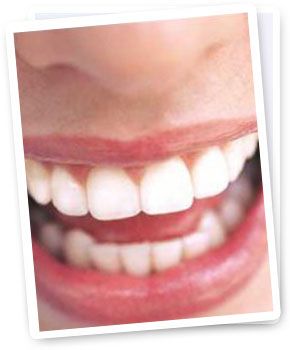Mini Dental Implants
Since the FDA approved the MDI mini implant as a long term method of denture stabilization, mini implants have become increasingly popular among dentists. They are also used for supporting crowns in situations in which there is not enough room for a standard implant. The cost of a mini dental implant is generally on the order of one quarter to one third the cost of a standard dental rootform implant. (Note: MDI mini implants have also been accepted for transitional and long term use by Health Canada in Ottawa 11/9/04.)
Mini implants come in four diameters (1.8mm, 2.1mm, 2.4mm and 2.9mm), and each diameter and comes in 4 lengths (10mm, 13mm, 15mm, and 18mm). The the 2.9mm diameter mini is called is called a "Hybrid" since it is nearly the diameter of the smallest available rootform implant, but can still be placed using the simplified surgical procedure shown below. Hybrids are used exclusively for the softer bone densities found in the upper arch. The smaller diameter implants are for the denser bone types. The length chosen by the surgeon is determined by the amount of vertical bone available to retain the implant. Very dense cortical bone is better served with a shorter, thinner implant. Generally, four mini implants are placed in the anterior portion of the lower jaw.
Unlike standard implants, mini implants allow immediate loading. This means that the patient walks out of the office on the day of surgery with a lower denture which is not only solidly stable, but can be used to eat immediately. Mini implants can often (not always) be placed in the lower jaw without cutting an incision in the gums. In other words, they can often be placed right through the gums directly into the underlying bone. Most of the time, the only anesthetic necessary is an injection directly over the position in the gums where each implant is to be placed. The old lower denture can then be retrofitted over the newly placed implants(a new long term denture is made about 3 months later), and the patient can use the denture immediately without waiting for the three to six months necessary for a standard implant to integrate. Furthermore, because the smaller mini implants are about the size of a standard wooden toothpick (they are made out of a titanium alloy), patients who have been told that there is not enough bone to accommodate standard implants can generally be fitted with minis. The entire procedure (placing the implants and retrofitting the old denture so that it is supported by the newly placed minis) takes about 90 minutes. It is generally painless, and produces very minimal post operative discomfort.
Patients can be fitted with these implants and begin using the newly stabilized denture immediately because these implants do not require months of waiting time to integrate. The implants are "screwed" firmly into the bone so integration is immediate (although further integration on a microscopic level has been shown to take place for months after the initial placement of the implant. Finally, since the procedure generally involves no major incisions, there are very few contra-indications to the surgery.
The only medical conditions that absolutely preclude the placement of these implants are the following:
- Uncontrolled diabetes
- A history of radiation treatment to the jaws (generally for cancer)--this does not include diagnostic x-rays
- Immuno-suppressed patient
- Substance abuse
Factors which place the prognosis for these implants in doubt include the following: Note that these factors do not necessarily preclude the use of mini implant retained dentures. However patients who exhibit these traits are more likely to suffer complications and possible failure of one or more of the implants.
- Heavy smoking and/or drinking
- Sjorgren's syndrome
- Alzheimer's disease (these patients may be unable to insert and remove the dentures after the implants are placed)
- People who clench their teeth.
- Young persons who are still growing
Even people with heart disease, high blood pressure, or other serious medical conditions usually have no difficulties retaining mini implants. Old age is NOT a factor! Persons taking anticoagulants like coumadin and wafarin need to stop taking their medication several days before the procedure only if the dentist determines that an incision will be necessary in order to place the implants. The surgery is very short (about 90 minutes) and very little bleeding occurs. Furthermore, there is generally very little post operative discomfort. Tylenol, Advil, or Aleve for the first twelve hours after surgery are often sufficient. If an incision is used, the dentist may prescribe a narcotic for the first twelve hours after the surgery. If no incision is used, many people require no pain medication at all.
Patients on immunosuppressive therapies such as methotrexate for rheumatoid arthritis may be successful with mini implants if the dose of the immunosuppressant is low, and the patient is able to take a drug holiday for at least a week before the implants are inserted and a week afterwards. Always check with your physician before doing this.
Oral bisphosphonates (for osteoporosis or Pagets disease of bone--drugs like Actonel, Boniva and Fosamax) are not considered a contraindication for implants. While implants have been known to fail in patients taking oral bisphosphonates, studies indicate a very low risk of either implant loss or BRONJ (Bisphonate Related OsteoNecrosis of the Jaw) following implant placement. This is especially true if the patient has been taking the drug for less than three years and has no other complicating factors. If the patient has been taking their bisphosphonate for more than three years, some authorities recommend a two to three month drug holiday before the implants are placed, extending to about a month post-op.
What is involved?
The first visit is a general "meet and greet" during which the doctor gets the necessary information from the patient and explains to the patient what to expect. At this time or at a subsequent visit, the dentist will generally take two x-rays; a panorex and a lateral jaw film to assess the amount of bone available, and to determine which size implant is appropriate for the case. In a very few instances, we find cases in which the amount or quality of bone is not suitable even for mini implants. The old denture is assessed for suitability to receive housings with o-rings. These housings remain permanently in the denture and will engage the implants. If the denture is not suitable to receive housings, or the patient has decided to have a new one made after the implants are placed, the dentist will simply reline the old denture with soft reline material. The soft reline material engages the denture nearly as well as the housings, but should be changed every six months. If the patient is a suitable candidate, he/she is given all the information necessary in order to decide if he/she really wants to go through with the
The finished case looks like the images below. This is the same case viewed head on, and again, from above, using a mirror. These images were taken immediately post op. Note the lack of bleeding.
Frequently Asked Questions
Q. How long do mini implants last?
A. No one can guarantee how long any implant will last since so many of the factors that determine the longevity of these devices are patient specific. The term "permanent" is not accurate concerning any medical or dental device, since nothing in medicine or dentistry can be guaranteed to last forever. The term "long term" is more accurate and truthful when referring to any dental appliance. Some minis done in the mid 1970's are still in function. Mini implants have been in common usage only since about the year 2000, after approval for long term use by the FDA. The vast majority of MDI minis placed since that time are still functioning well. A small percentage of implants will fail for various reasons. A failed mini implant is easily removed, and healing is generally complete. Another implant can usually be placed adjacent to the site of the failed implant immediately, or after waiting for three months, directly into the position formerly occupied by the failed implant.
Q. I have heard of cases in which an implant will break while the dentist is inserting it. What happens then?
A. Unfortunately, this is a common problem when placing mini implants in the very dense bone of a heavily resorbed lower jaw. Considerable force is placed on the implant during the process of insertion. breaking an occasional mini implant during insertion is considered a "normal" complication, and since the implant is made of titanium and will actively integrate with the bone, there is no good reason to retrieve the broken piece. Most dentists simply remove any of the broken implant that remains above the boneline and then proceed to place another implant adjacent to the broken one. When the bone of the lower jaw is very heavily resorbed, I generally recommend that the patient opts for larger diameter rootform implants
Q. What if the patient smokes or drinks heavily?
A. Patients who smoke are MUCH more likely to experience implant failure. Smoking seems to affect the circulation of blood which is, of course, a factor in healing. Heavy drinking and other substance abuse negatively affects a patient's nutrition and general health. Some high functioning alcoholics have been successful with dental implants, but substance abuse is generally a contra-indication for placing any type of implant.
Q. Why does clenching or grinding on a denture increase the likelihood of implant failure?
A. Unlike natural teeth, implants are solidly attached to the bone without an intervening ligament. This means that implants do not have a natural "shock absorber" to reduce the effect of the constant forces that grinding and clenching will transmit to them. Clenching and grinding can place literally tons of pressure on the bone/implant interface. Bone is not well vascularized (ie. it does not have a lot of blood vessels to nourish and heal it in case of injury). The constant "shocks" experienced at the bone/implant interface due to clenching and grinding cause micro fractures and crushing of bone at the interface and these will subsequently cause the body to recognize the implant as a foreign invader. Thus the body mounts an inflammatory response, which means that it begins to replace the bone surrounding the implant with soft tissue containing lots of blood vessels in order to "reject" the implant.
People who habitually grind or clench their teeth may still be able to retain implants, but they would do better to avoid the housings with the o-rings, and remain with the soft reline option mentioned above.
Q. My mother is nearly 90 but still quite bright and active. She is frustrated because she can't eat with her lower denture. Are mini implants a good alternative for her, or is she too old?
A. Age or physical condition are not usually factors regarding the success of mini implants. Your mother is probably a candidate for minis. The short surgery, low cost and minimal post-op discomfort, as well as the ability to function against the new implants immediately, make this form of therapy ideal even for seniors with numerous physical ailments. The only common age related factors that may interfere with these cases are dementia and severe osteoporosis. Severe osteoporosis may affect the bone density and reduce the likelihood that the implants will be successfully retained. Dementia makes it difficult or impossible for the patient to cooperate during surgery, and may make it difficult for the patient to insert or remove the denture after surgery.
Q. Can a mini implant fracture or break while I am eating?
A. MDI minis are made of a special alloy of titanium (Ti6A14Va) rather than the CP titanium used in conventional implants. The use of this alloy has virtually eliminated the likelihood of fracture of these implants during normal functioning. The clinical trials of these implants prove that they can take a lot of abuse before fracturing.


